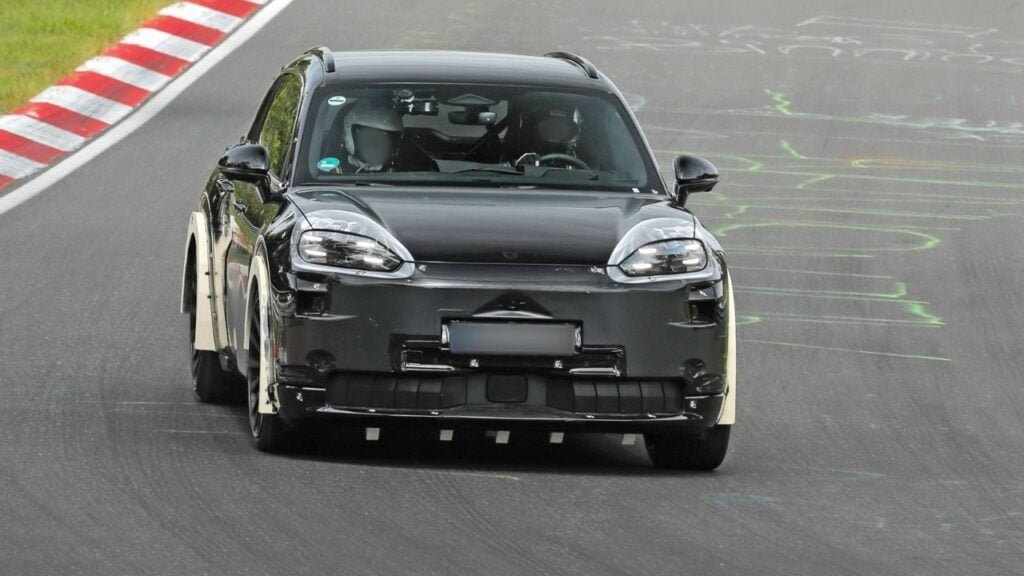- The 2026 Porsche Cayenne EV prototype was recently spotted testing at the Nürburgring, indicating advanced stages of development.
- Unlike earlier prototypes that resembled the Macan EV, the latest Cayenne EV features a streamlined silhouette similar to the second-generation Audi Q7.
- Set to debut in 2026, the Cayenne EV will feature a dual-motor setup, delivering more power than the Macan EV and targeting a range of over 300 miles.



The 2026 Porsche Cayenne EV continues to captivate automotive enthusiasts, as recent sightings of a prototype testing at the Nürburgring have surfaced. This latest appearance reveals Porsche engineers’ focus on optimizing ground clearance, with notable modifications around the wheel arches drawing particular attention.
Last year, early test mules of the Cayenne EV were spotted on public roads, bearing a resemblance to the Macan EV due to the shared PPE architecture. However, it has become clear that the all-electric Cayenne will feature a distinct design, adopting a sleek silhouette similar to that of the second-generation Audi Q7.
As Porsche’s development of the Cayenne EV progresses, more intricate details of the electric SUV are being unveiled. In May, two prototypes provided fresh insights into the 2026 model. One prototype displayed two air grilles at the rear, while the other had none, indicating Porsche is experimenting with different thermal management systems or model variations. Additionally, active air intake louvers were visible in the lower section of the front bumper.
A recent batch of photos taken at the Nürburgring race track in Germany offered a closer look at this active grille in action. As the prototype navigated the Nordschleife’s challenging curves, the louvers on the left side were partially open while those on the right remained closed, demonstrating an impressive level of control over intake air volume that could enhance the Cayenne EV’s efficiency.
Although this marks the first occasion the Cayenne EV has been seen testing at the Nürburgring, another detail stands out. The prototype featured unique foam “ornaments” around the wheel arches and underbody, suggesting that Porsche is fine-tuning the suspension, specifically the ground clearance and space under the wheel arches during high-speed cornering.
The white foam serves as an indicator for engineers to assess suspension travel, as it becomes scraped during driving. The Cayenne EV’s considerable weight causes noticeable suspension compression in certain racetrack sections like Schwalbenschwanz. Porsche is likely to adjust damper firmness to manage suspension travel effectively.
An interesting feature observed is the presence of charge ports on both sides of the Cayenne EV. This design, standard for Porsche EVs, allows for AC charging from both sides, with DC charging available only on the right port.
Slated for a 2026 release, the Cayenne EV will boast a dual-motor setup, delivering more power than the base variant of the Macan EV, which offers 402 horsepower. While the Macan Turbo achieves up to 630 horsepower, the heavier Cayenne might exhibit a slower pace. However, Porsche could equip the Cayenne with even more potent motors. Additionally, it will feature a larger battery than the Macan EV, targeting a range exceeding 300 miles.


